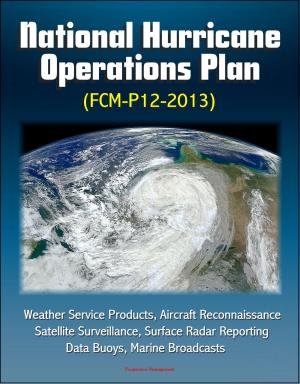History of the Joint Chiefs of Staff: The War in Vietnam 1960-1968, Part 3 - Rolling Thunder, TET Offensive, Domestic Dissent, Quest for Talks, Strengthening the RVNAF
Nonfiction, History, Asian, Southeast Asia, Military, Vietnam War| Author: | Progressive Management | ISBN: | 9781301633760 |
| Publisher: | Progressive Management | Publication: | October 3, 2013 |
| Imprint: | Smashwords Edition | Language: | English |
| Author: | Progressive Management |
| ISBN: | 9781301633760 |
| Publisher: | Progressive Management |
| Publication: | October 3, 2013 |
| Imprint: | Smashwords Edition |
| Language: | English |
Part III of The Joint Chiefs of Staff and the War in Vietnam, 1960-1968, describes the formulation of policies and decisions during the years 1967-1968, the period during which the United States military escalation in Southeast Asia culminated. As it was written well before the war ended, the sources its authors used were quite limited; for example, the Pentagon Papers were not then available. Since that time, additional source material on all aspects of the war has become available both in US official records and in histories produced by the other side and made available in English. During the period covered by this study, the United States' military effort in Indochina, both in the ground battle in South Vietnam and the air war against North Vietnam, reached its highest level. As the scale and costs of the conflict increased with no sign of a decisive outcome, American public support for the war began to crumble as did the Johnson administration's confidence in its own policies. When the Communists launched their nationwide Tet Offensive early in 1968, the President and his advisers were already taking tentative steps toward limiting the American commitment and turning more of the war over to the South Vietnamese. Although a costly tactical defeat for the Viet Cong and North Vietnamese, the shock of the Tet Offensive set the Johnson administration on a course of de-escalation from which there was to be no turning back.
-
The Situation, January 1967 * 2. Action on the Diplomatic Front * 3. ROLLING THUNDER Gains Momentum, February-June 1967 * 4. Launching the General Offensive: Operations in South Vietnam, January-May 1967 * 5. The Debate over Escalation * 6. ROLLING THUNDER at Its Zenith: Operations against North Vietnam, July 1967-January 1968 * 7. Military Operations in South Vietnam, June 1967-January 1968 * 8. Pacification and Nation Building—1967 * 9. Domestic Dissent and Policy Debate * 10. The TET Offensive * 11. A New Departure in Policy * 12. De-escalation and the Quest for Talks * 13. Strengthening the RVNAF * 14. After TET: The May and August Offensives * 15. The Paris Talks through the Bombing Halt * 16. Pressing the Attack in the South
-
The Situation, January 1967 * 2. Action on the Diplomatic Front * Operation MARIGOLD * Appeal to U Thant * Operation SUNFLOWER * The JCS Express Their Views * 3. ROLLING THUNDER Gains Momentum, February-June 1967 * The Bombing Resumes * RT 55 and the MIG Threat * RT 56 and the Hanoi Thermal Power Plant * ROLLING THUNDER Is Restricted * 4. Launching the General Offensive: Operations in South Vietnam, January-May 1967 * General Westmoreland's Concept of Operations for 1967 * The Antagonists * Strengthening ARC LIGHT * CEDAR FALLS and JUNCTION CITY * Operations in II Corps Tactical Zone * Enemy Counterblows— I Corps Tactical Zone * Reinforcement of I CTZ * The DMZ Barrier * General Westmoreland Requests Additional Forces * 5. The Debate over Escalation * The JCS' Views on Westmoreland's Request * Free World Countries as Sources of Additional Forces * The Debate Is Joined—Counterproposals by OSD * The Joint Chiefs Reply to McNamara * The Debate Continues: The Revised DPM of 12 June * McNamara Visits Saigon * The Presidential Decisions * 6. ROLLING THUNDER at Its Zenith: Operations against North Vietnam, July 1967-January 1968 * The Original ROLLING THUNDER 57 Package * The Senate Takes a Hand: The Stennis Hearings * New Targets and a Peace Initiative * Strikes in the Buffer Zone * Operations against the Ports * Countering the MIG Threat * ROLLING THUNDER Unleashed * ROLLING THUNDER Subsides * ROLLING THUNDER Pro and Con * 7. Military Operations in South Vietnam, June 1967-January 1968 * Westmoreland's Summer Plans * Summer Operations in III and IV CTZs * Summer Operations in II CTZ * Hard Fighting in I CTZ * Actions to Strengthen MACV * Enemy Pressure on the Cambodian Border * Attacking the Ho Chi Minh Trail
Part III of The Joint Chiefs of Staff and the War in Vietnam, 1960-1968, describes the formulation of policies and decisions during the years 1967-1968, the period during which the United States military escalation in Southeast Asia culminated. As it was written well before the war ended, the sources its authors used were quite limited; for example, the Pentagon Papers were not then available. Since that time, additional source material on all aspects of the war has become available both in US official records and in histories produced by the other side and made available in English. During the period covered by this study, the United States' military effort in Indochina, both in the ground battle in South Vietnam and the air war against North Vietnam, reached its highest level. As the scale and costs of the conflict increased with no sign of a decisive outcome, American public support for the war began to crumble as did the Johnson administration's confidence in its own policies. When the Communists launched their nationwide Tet Offensive early in 1968, the President and his advisers were already taking tentative steps toward limiting the American commitment and turning more of the war over to the South Vietnamese. Although a costly tactical defeat for the Viet Cong and North Vietnamese, the shock of the Tet Offensive set the Johnson administration on a course of de-escalation from which there was to be no turning back.
-
The Situation, January 1967 * 2. Action on the Diplomatic Front * 3. ROLLING THUNDER Gains Momentum, February-June 1967 * 4. Launching the General Offensive: Operations in South Vietnam, January-May 1967 * 5. The Debate over Escalation * 6. ROLLING THUNDER at Its Zenith: Operations against North Vietnam, July 1967-January 1968 * 7. Military Operations in South Vietnam, June 1967-January 1968 * 8. Pacification and Nation Building—1967 * 9. Domestic Dissent and Policy Debate * 10. The TET Offensive * 11. A New Departure in Policy * 12. De-escalation and the Quest for Talks * 13. Strengthening the RVNAF * 14. After TET: The May and August Offensives * 15. The Paris Talks through the Bombing Halt * 16. Pressing the Attack in the South
-
The Situation, January 1967 * 2. Action on the Diplomatic Front * Operation MARIGOLD * Appeal to U Thant * Operation SUNFLOWER * The JCS Express Their Views * 3. ROLLING THUNDER Gains Momentum, February-June 1967 * The Bombing Resumes * RT 55 and the MIG Threat * RT 56 and the Hanoi Thermal Power Plant * ROLLING THUNDER Is Restricted * 4. Launching the General Offensive: Operations in South Vietnam, January-May 1967 * General Westmoreland's Concept of Operations for 1967 * The Antagonists * Strengthening ARC LIGHT * CEDAR FALLS and JUNCTION CITY * Operations in II Corps Tactical Zone * Enemy Counterblows— I Corps Tactical Zone * Reinforcement of I CTZ * The DMZ Barrier * General Westmoreland Requests Additional Forces * 5. The Debate over Escalation * The JCS' Views on Westmoreland's Request * Free World Countries as Sources of Additional Forces * The Debate Is Joined—Counterproposals by OSD * The Joint Chiefs Reply to McNamara * The Debate Continues: The Revised DPM of 12 June * McNamara Visits Saigon * The Presidential Decisions * 6. ROLLING THUNDER at Its Zenith: Operations against North Vietnam, July 1967-January 1968 * The Original ROLLING THUNDER 57 Package * The Senate Takes a Hand: The Stennis Hearings * New Targets and a Peace Initiative * Strikes in the Buffer Zone * Operations against the Ports * Countering the MIG Threat * ROLLING THUNDER Unleashed * ROLLING THUNDER Subsides * ROLLING THUNDER Pro and Con * 7. Military Operations in South Vietnam, June 1967-January 1968 * Westmoreland's Summer Plans * Summer Operations in III and IV CTZs * Summer Operations in II CTZ * Hard Fighting in I CTZ * Actions to Strengthen MACV * Enemy Pressure on the Cambodian Border * Attacking the Ho Chi Minh Trail















